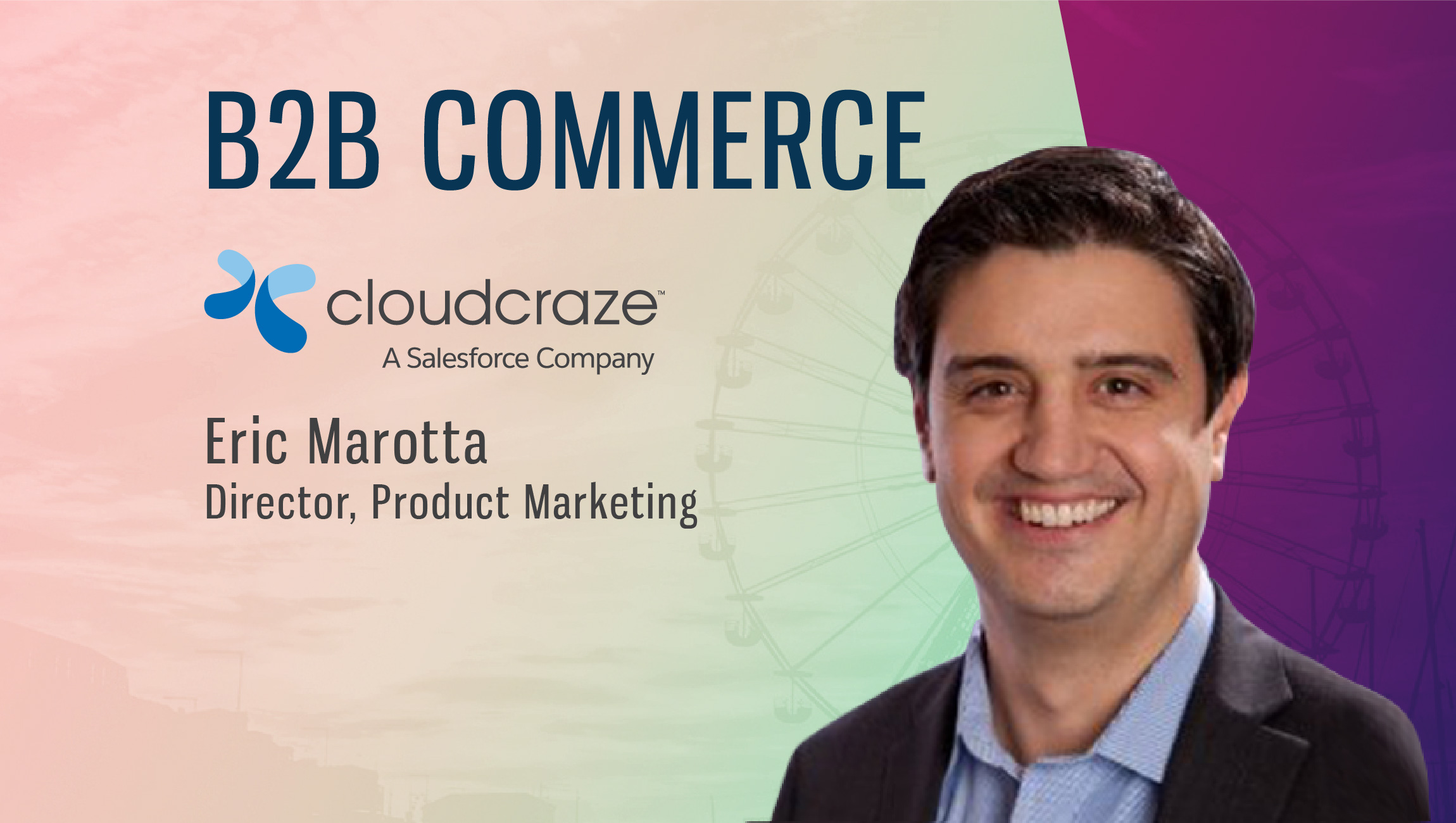Eric Marotta
Director Product Marketing, CloudCraze
CRM Titan Salesforce recently acquired B2B commerce experience provider CloudCraze. The customer-first B2B commerce enabler had raised $30.6 million in funding, including a $20 million round in 2017 that included participation from Salesforce Ventures. We spoke to Eric Marotta, Director Product Marketing, Cloudcraze to understand how the company would benefit from this acquisition and what the future for B2B commerce looked like.
Html code here! Replace this with any non empty text and that's it.
What are the benefits of CloudCraze integrating with the Salesforce customer success platform?
The benefits are threefold.
- CloudCraze is able to tap into customer analytics that empowers new customer insights and drives high performing marketing programs. The unified customer record gives B2B businesses a common and combined view across self-service, sales and service engagements.
- These insights drive new sales and service engagements. B2B relationships are driven by personal ‘offline’ channels. CloudCraze provides a common ordering and service platform for a multi-channel engagement that is transformative. It lowers cost to serve, and improves efficiencies by digitizing the ordering back and forth, and meeting planning
- Finally, B2B organizations can help drive new efficiencies within field service, be it coordinating case management or spare part replacements. CloudCraze, together with Salesforce, adds visibility and efficiencies in servicing the account.
How is the Customer Interaction Model different for B2B commerce compared to that of ecommerce?
Organizations focused on eCommerce are focused on one persona: the consumer. In B2B, organizations are focused on three personas: the sales channel, service channel and customer, and all three need to be supported equally.
Traditionally, the messaging and product design for B2B commerce has been focused on commerce being a siloed channel. B2B engagements are fundamentally different in that they are multi-channeled and multi-tiered. Brands must design for the sophisticated relationships when digitizing the B2B relationship. The multi-sided relationships include business units that sell to markets through partners and service those customers through partners. The same is true for other markets that have direct sales and service teams. B2B companies have partners and customer-owned service teams that engage to support things like the install process and post-order handling. These relationships and complexities come into play at a market and geographic level.
What are the core capabilities for companies to stay competitive and sustainable in the growing B2B market?
For companies to stay competitive in the growing B2B market, they need to be focused on supporting a multi-tiered/multi-channel strategy. It’s not just about the cloud or a set of features, but the underlying customer platform needs. The design must be inherently focused on the customer processes, meeting today’s demands and the evolving demands that will inevitably flip the model tomorrow. In order to be prepared, companies need a platform that has the capabilities to support the complex channel relationships (product, price) with that of more sophisticated products and services offered in the future. Companies also need to be able to introduce new products to market with immediacy, implement a strategy that enables brand growth, retain customers and support a global, multi-enterprise strategy.
What’s the role of CIO in implementing innovative commerce strategies?
To stay competitive in a growing B2B market, a digital-first strategy is a must. Organizations are working to redefine customer engagement in a world that has been defined by legacy channels like call centers, and legacy business systems like the ERP. CIOs are playing a significant role in leading this charge, spearheading the evolution of digital-first to customer-first. The CIOs that are successful are focused not only on the implementation but the adoption of their ‘customer’ investments. They continually test, learn, and iterate on new customer-led experiences no matter the channel of engagement.
Thanks for chatting with us, Eric.
Stay tuned for more insights on marketing technologies. To participate in our Tech Bytes program, email us at news@martechseries-67ee47.ingress-bonde.easywp.com











